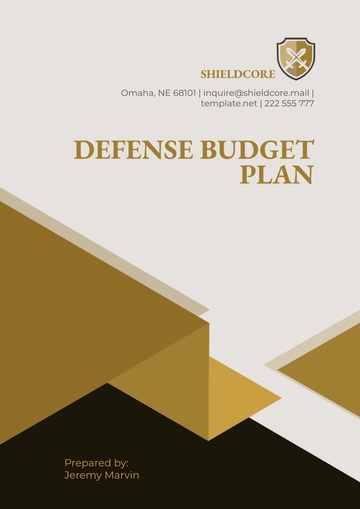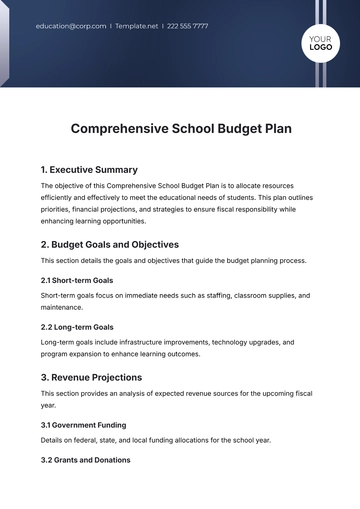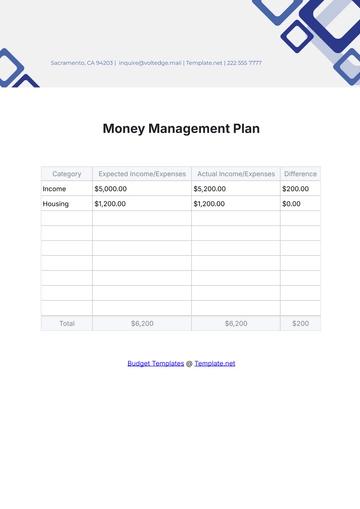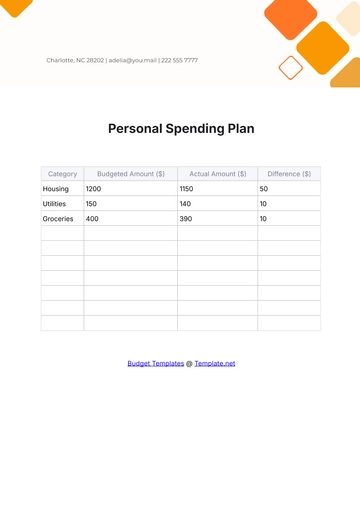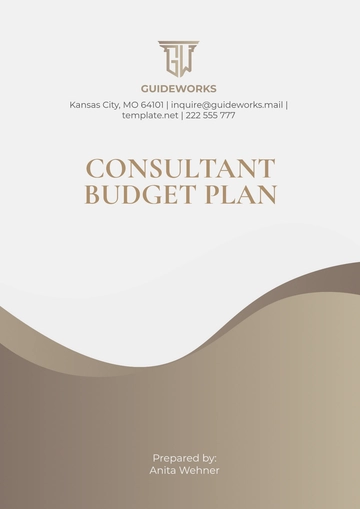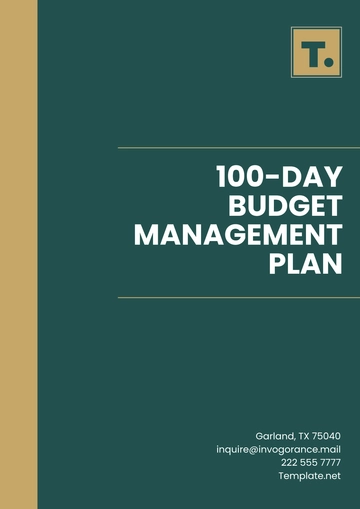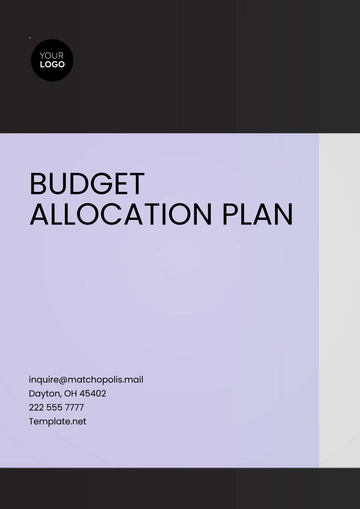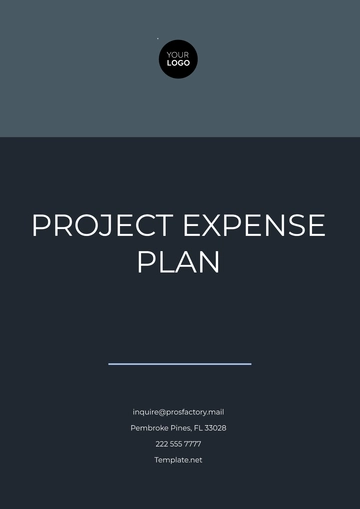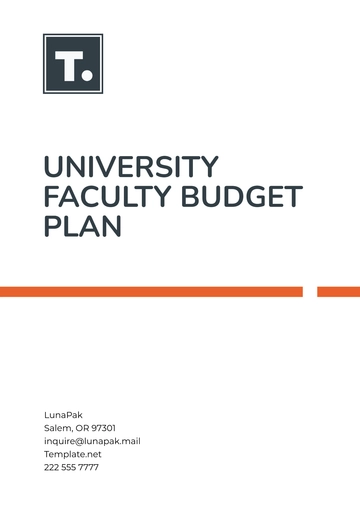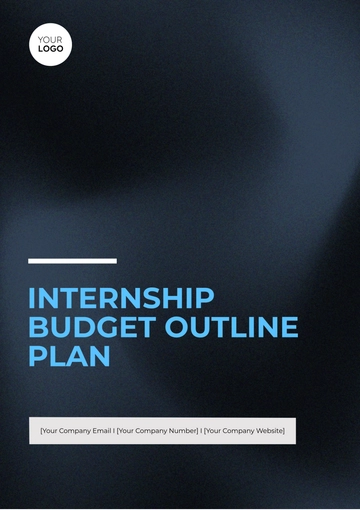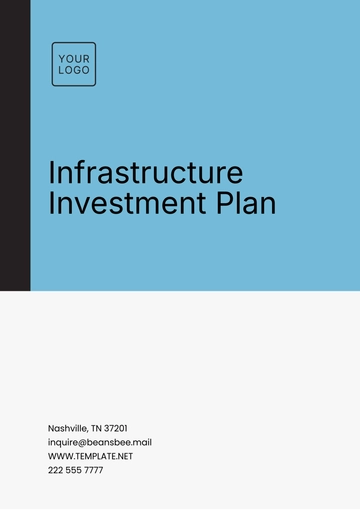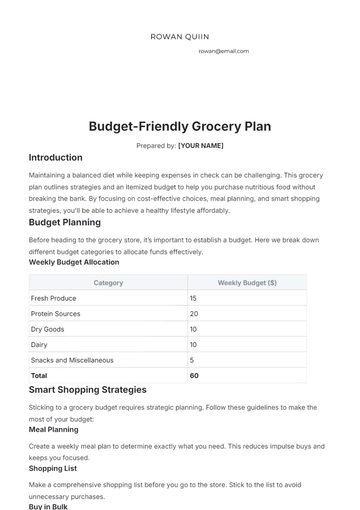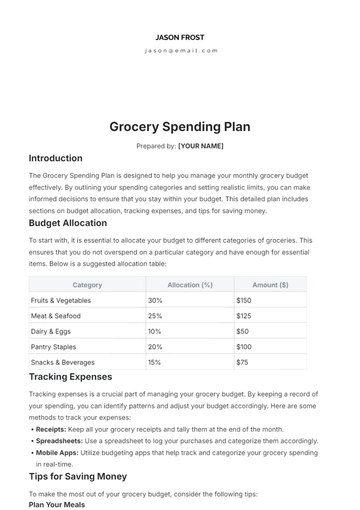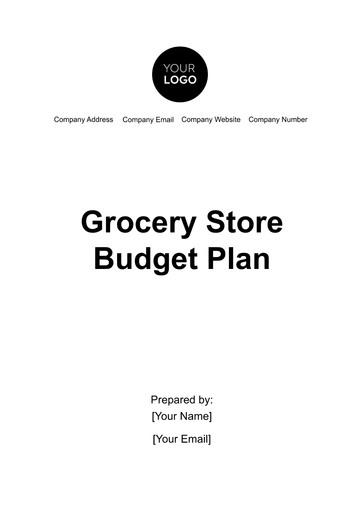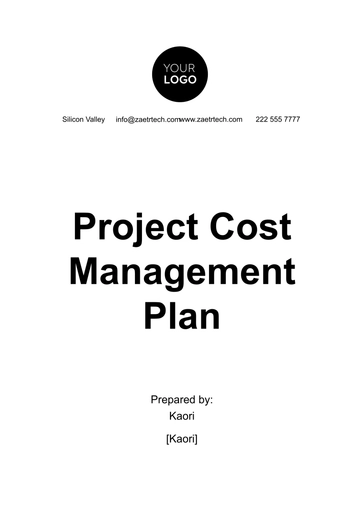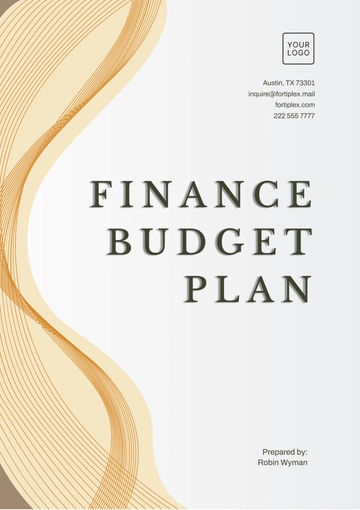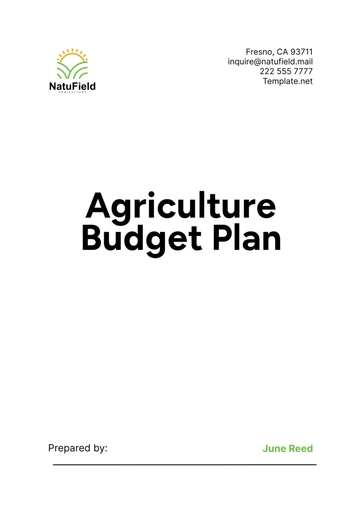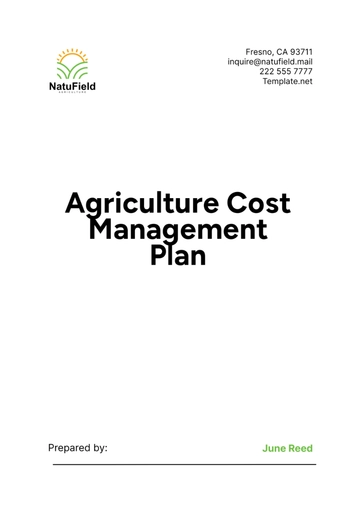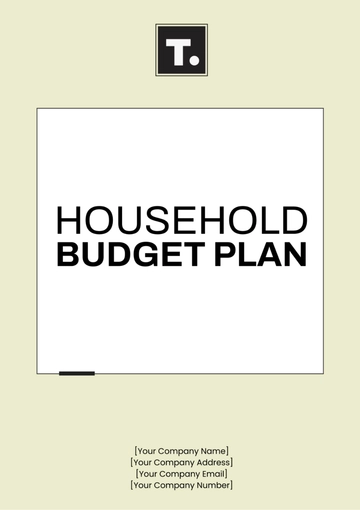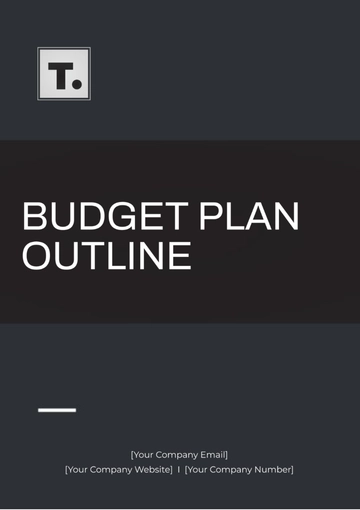Free Administration Budget Plan
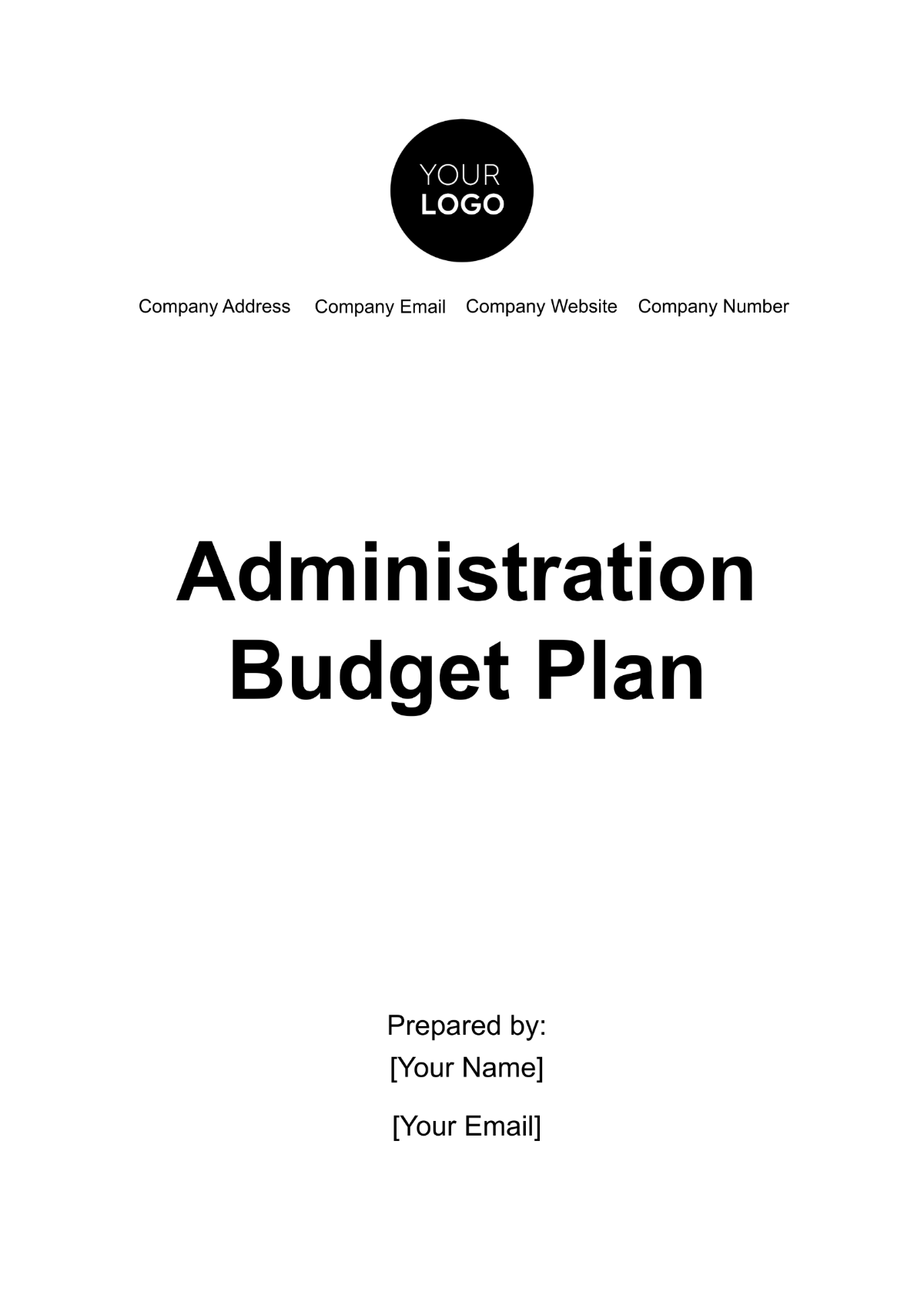
I. Executive Summary
The Administration Budget Plan for [Your Company Name] is designed to ensure the efficient allocation of resources to support the company’s operational goals while maintaining strict compliance with US financial regulations. This plan outlines the financial blueprint for administrative functions, focusing on optimizing costs, enhancing productivity, and ensuring that all expenditures contribute to the strategic objectives of the company. By systematically evaluating and forecasting expenses across various administrative departments, [Your Company Name] aims to sustain its competitive edge and support long-term growth.
The budget plan emphasizes key areas such as personnel costs, office supplies, technology, and other overheads critical to the daily operations of [Your Company Name]. In alignment with US legal standards, the plan incorporates measures to monitor and control expenses, ensuring transparency and accountability at every level. This approach not only promotes financial discipline but also provides a framework for making informed decisions that can adapt to changes in the business environment. Ultimately, this Administration Budget Plan will serve as a vital tool for maintaining fiscal responsibility while enabling [Your Company Name] to achieve its strategic objectives.
II. Budget Goals
Setting clear and actionable goals is crucial for guiding the effective management of our administration budget at [Your Company Name]. This section outlines the primary objectives we aim to achieve, which are pivotal for ensuring our administrative functions align with the company’s broader strategic vision. By focusing on optimizing resource utilization, maintaining financial stability, improving operational efficiency, and enhancing transparency, we aim to drive sustainable growth and operational excellence. These goals will serve as the foundation for our budgetary decisions and performance evaluations.
Optimize usage of financial, human, and physical resources.
Maintain financial stability and sustainability.
Improve operational efficiency through strategic investments.
Enhance transparency and accountability in financial management.
III. Revenue Projections
Accurate revenue projections are fundamental for effective budgeting and financial planning. In this section, we present a detailed breakdown of our anticipated revenue sources for the fiscal year at [Your Company Name]. This includes funds from government grants, service fees, donations, and other miscellaneous income. By outlining these projections, we aim to provide a clear overview of the financial inflows that will support our administrative and operational activities. This transparency not only aids in strategic planning but also ensures alignment with our budgetary goals, facilitating informed decision-making and resource allocation throughout the fiscal period.
The following table outlines the projected revenue sources for the fiscal year:
Source | Amount (in USD) |
|---|---|
Government Grants | 5,000,000 |
Service Fees | 2,000,000 |
Donations | 500,000 |
Other | 300,000 |
Total | 7,800,000 |
IV. Expenditure Breakdown
A comprehensive understanding of planned expenditures is crucial for effective financial management and ensuring that resources are allocated efficiently. In this section, we provide a detailed breakdown of the anticipated expenses for [Your Company Name] for the fiscal year. The table outlines allocations for salaries and wages, operational costs, technology and infrastructure, staff training and development, contingency funds, and miscellaneous expenses. This structured approach ensures that each category is funded appropriately to support our administrative functions and strategic goals. By delineating these expenditures, we aim to promote transparency and facilitate precise budgeting and financial oversight.
The following table details the planned expenditures:
Category | Amount (in USD) |
|---|---|
Salaries and Wages | 3,200,000 |
Operational Costs | 1,500,000 |
Technology and Infrastructure | 1,200,000 |
Staff Training and Development | 500,000 |
Contingency Fund | 400,000 |
Miscellaneous | 1,000,000 |
Total | 7,800,000 |
V. Cost Control and Efficiency Measures
Effective cost control and efficiency measures are pivotal to maintaining financial health and achieving strategic objectives at [Your Company Name]. To ensure our budget remains on track and resources are utilized effectively, we will implement several key strategies:
Periodic Budget Reviews: Regular budget reviews will be conducted to monitor financial performance and identify any variances from the planned budget. These reviews will involve a thorough analysis of expenditures and revenues to pinpoint areas of concern. By addressing these variances promptly, we can make necessary adjustments and take corrective actions to prevent budget overruns and ensure financial stability.
Technology Integration: Leveraging advanced technology will be a cornerstone of our strategy to enhance operational efficiency. We will invest in modern tools and systems designed to streamline processes, automate routine tasks, and improve data accuracy. By optimizing technology use, we aim to reduce operational costs and improve overall productivity, thereby reallocating savings to other critical areas.
Cost-Awareness Culture: Fostering a culture of cost-awareness among employees is essential for promoting fiscal responsibility and reducing waste. We will implement training programs and internal communications to educate staff on the importance of cost control and encourage proactive measures to minimize unnecessary expenses. Recognizing and rewarding cost-saving initiatives will further reinforce this culture and drive continuous improvement.
Supplier Negotiations: Strategic negotiations with suppliers will be undertaken to secure better pricing and terms. By seeking competitive bids and leveraging our purchasing power, we aim to reduce costs for goods and services. Establishing long-term relationships with key suppliers and exploring bulk purchasing options will contribute to more favorable contract terms and cost savings.
Together, these measures will enhance our financial management practices, improve operational efficiency, and support the sustainable growth of [Your Company Name].
VI. Monitoring and Reporting
Robust monitoring and reporting mechanisms are essential for ensuring that [Your Company Name]'s administration budget is effectively managed and aligned with our financial goals. To maintain control over expenditures and evaluate performance, we will implement a comprehensive monitoring and reporting framework comprising the following key components:
Monthly Financial Reports: To track progress and ensure adherence to the budget, we will produce detailed financial reports on a monthly basis. These reports will include a comparison of actual expenditures and revenues against the budgeted figures, highlighting any discrepancies or variances. By regularly reviewing these reports, management can quickly identify areas that require attention, make informed decisions, and take corrective actions as needed. Monthly reporting will also facilitate proactive management of cash flow and financial resources.
Quarterly Performance Reviews: To assess the effectiveness of our budgetary strategies and operational efficiency, we will conduct comprehensive performance reviews on a quarterly basis. These reviews will evaluate the performance of various departments and programs against established key performance indicators (KPIs). The findings will be used to realign strategies, address any emerging issues, and optimize resource allocation. Quarterly reviews ensure that we stay on course with our financial objectives and can adapt to any changes in the business environment.
Annual Audit: An annual audit will be performed to ensure compliance with financial regulations and internal policies. This independent review will assess the accuracy and integrity of our financial statements, confirm adherence to regulatory requirements, and evaluate the effectiveness of our internal controls. The audit findings will provide valuable insights into our financial practices, highlight areas for improvement, and reinforce transparency and accountability.
VII. Risk Management
Effective risk management is crucial for safeguarding [Your Company Name]'s financial health and ensuring the resilience of our operations. By identifying potential risks and implementing strategic mitigation measures, we aim to minimize their impact and maintain stability. The following outlines our approach to managing key risks:
Revenue Shortfalls: Revenue shortfalls can disrupt financial stability and hinder our ability to meet budgetary goals. To mitigate this risk, we will focus on developing diversified income streams. By expanding our revenue sources beyond the primary channels, such as government grants and service fees, we can reduce reliance on any single source of income. Exploring new business opportunities, enhancing fundraising efforts, and cultivating partnerships will help create a more robust revenue base, thus providing greater financial stability.
Unexpected Expenses: Unanticipated expenses can strain the budget and affect operational efficiency. To manage this risk, we will maintain a contingency fund specifically designated for unforeseen costs. This fund will act as a financial buffer, ensuring that we have the resources available to address unexpected expenses without disrupting planned expenditures. Regularly reviewing the adequacy of the contingency fund will ensure it remains sufficient to cover potential emergencies or unforeseen financial demands.
Economic Changes: Fluctuations in the economic environment can impact financial performance and operational planning. To address this risk, we will regularly review and update our financial assumptions and forecasts based on current economic conditions. This proactive approach will enable us to adjust our budgetary strategies and operational plans in response to economic shifts, ensuring that we remain adaptable and resilient in the face of changing market dynamics.
Operational Disruptions: Disruptions to operations, whether due to technological failures or other unforeseen issues, can hinder productivity and affect financial performance. To mitigate this risk, we will invest in robust technology infrastructure that supports business continuity and operational efficiency. By implementing reliable systems, backup solutions, and disaster recovery plans, we aim to minimize the impact of operational disruptions and ensure seamless business operations.
VIII. Conclusion
The Administration Budget Plan for [Your Company Name] provides a comprehensive framework for managing financial resources effectively and achieving our strategic objectives. By setting clear budget goals, detailing revenue projections, and outlining expenditures, this plan ensures a disciplined approach to financial management. Our commitment to cost control, efficiency measures, and rigorous monitoring will facilitate prudent resource allocation and support sustainable growth. Through regular reviews and strategic risk management, we aim to adapt to changing conditions and maintain financial stability.
The strategies and measures outlined in this plan are designed to foster transparency, accountability, and operational excellence at [Your Company Name]. By adhering to these guidelines, we will not only enhance our financial performance but also strengthen our ability to achieve long-term success. The Administration Budget Plan will serve as a vital tool in guiding our decision-making processes and ensuring that all financial activities are aligned with our company's goals. We are confident that with this structured approach, [Your Company Name] will continue to thrive and effectively navigate any challenges that arise.
- 100% Customizable, free editor
- Access 1 Million+ Templates, photo’s & graphics
- Download or share as a template
- Click and replace photos, graphics, text, backgrounds
- Resize, crop, AI write & more
- Access advanced editor
Manage finances effectively with Template.net's Administration Budget Plan Template. Fully editable and customizable, this template allows you to outline and track your budget with ease. Adjust it to suit your organization's financial goals, editable in our Ai Editor Tool, for a professional budget plan that ensures fiscal responsibility.
You may also like
- Finance Plan
- Construction Plan
- Sales Plan
- Development Plan
- Career Plan
- Budget Plan
- HR Plan
- Education Plan
- Transition Plan
- Work Plan
- Training Plan
- Communication Plan
- Operation Plan
- Health And Safety Plan
- Strategy Plan
- Professional Development Plan
- Advertising Plan
- Risk Management Plan
- Restaurant Plan
- School Plan
- Nursing Home Patient Care Plan
- Nursing Care Plan
- Plan Event
- Startup Plan
- Social Media Plan
- Staffing Plan
- Annual Plan
- Content Plan
- Payment Plan
- Implementation Plan
- Hotel Plan
- Workout Plan
- Accounting Plan
- Campaign Plan
- Essay Plan
- 30 60 90 Day Plan
- Research Plan
- Recruitment Plan
- 90 Day Plan
- Quarterly Plan
- Emergency Plan
- 5 Year Plan
- Gym Plan
- Personal Plan
- IT and Software Plan
- Treatment Plan
- Real Estate Plan
- Law Firm Plan
- Healthcare Plan
- Improvement Plan
- Media Plan
- 5 Year Business Plan
- Learning Plan
- Marketing Campaign Plan
- Travel Agency Plan
- Cleaning Services Plan
- Interior Design Plan
- Performance Plan
- PR Plan
- Birth Plan
- Life Plan
- SEO Plan
- Disaster Recovery Plan
- Continuity Plan
- Launch Plan
- Legal Plan
- Behavior Plan
- Performance Improvement Plan
- Salon Plan
- Security Plan
- Security Management Plan
- Employee Development Plan
- Quality Plan
- Service Improvement Plan
- Growth Plan
- Incident Response Plan
- Basketball Plan
- Emergency Action Plan
- Product Launch Plan
- Spa Plan
- Employee Training Plan
- Data Analysis Plan
- Employee Action Plan
- Territory Plan
- Audit Plan
- Classroom Plan
- Activity Plan
- Parenting Plan
- Care Plan
- Project Execution Plan
- Exercise Plan
- Internship Plan
- Software Development Plan
- Continuous Improvement Plan
- Leave Plan
- 90 Day Sales Plan
- Advertising Agency Plan
- Employee Transition Plan
- Smart Action Plan
- Workplace Safety Plan
- Behavior Change Plan
- Contingency Plan
- Continuity of Operations Plan
- Health Plan
- Quality Control Plan
- Self Plan
- Sports Development Plan
- Change Management Plan
- Ecommerce Plan
- Personal Financial Plan
- Process Improvement Plan
- 30-60-90 Day Sales Plan
- Crisis Management Plan
- Engagement Plan
- Execution Plan
- Pandemic Plan
- Quality Assurance Plan
- Service Continuity Plan
- Agile Project Plan
- Fundraising Plan
- Job Transition Plan
- Asset Maintenance Plan
- Maintenance Plan
- Software Test Plan
- Staff Training and Development Plan
- 3 Year Plan
- Brand Activation Plan
- Release Plan
- Resource Plan
- Risk Mitigation Plan
- Teacher Plan
- 30 60 90 Day Plan for New Manager
- Food Safety Plan
- Food Truck Plan
- Hiring Plan
- Quality Management Plan
- Wellness Plan
- Behavior Intervention Plan
- Bonus Plan
- Investment Plan
- Maternity Leave Plan
- Pandemic Response Plan
- Succession Planning
- Coaching Plan
- Configuration Management Plan
- Remote Work Plan
- Self Care Plan
- Teaching Plan
- 100-Day Plan
- HACCP Plan
- Student Plan
- Sustainability Plan
- 30 60 90 Day Plan for Interview
- Access Plan
- Site Specific Safety Plan
